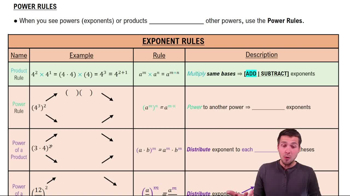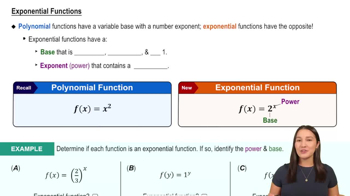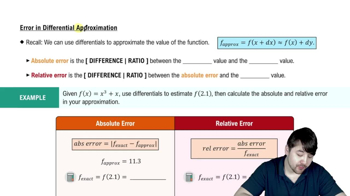Table of contents
- 0. Functions7h 52m
- Introduction to Functions16m
- Piecewise Functions10m
- Properties of Functions9m
- Common Functions1h 8m
- Transformations5m
- Combining Functions27m
- Exponent rules32m
- Exponential Functions28m
- Logarithmic Functions24m
- Properties of Logarithms34m
- Exponential & Logarithmic Equations35m
- Introduction to Trigonometric Functions38m
- Graphs of Trigonometric Functions44m
- Trigonometric Identities47m
- Inverse Trigonometric Functions48m
- 1. Limits and Continuity2h 2m
- 2. Intro to Derivatives1h 33m
- 3. Techniques of Differentiation3h 18m
- 4. Applications of Derivatives2h 38m
- 5. Graphical Applications of Derivatives6h 2m
- 6. Derivatives of Inverse, Exponential, & Logarithmic Functions2h 37m
- 7. Antiderivatives & Indefinite Integrals1h 26m
- 8. Definite Integrals4h 44m
- 9. Graphical Applications of Integrals2h 27m
- 10. Physics Applications of Integrals 2h 22m
4. Applications of Derivatives
Differentials
Problem 4.R.81
Textbook Question
60–81. Limits Evaluate the following limits. Use l’Hôpital’s Rule when needed.
lim_x→1 ( x- 1)^sinπx
 Verified step by step guidance
Verified step by step guidance1
First, recognize that the limit is in an indeterminate form of 0^0 as x approaches 1. This suggests that we might need to use a logarithmic transformation to simplify the expression.
Take the natural logarithm of the expression: ln((x - 1)^sin(πx)) = sin(πx) * ln(x - 1). This allows us to transform the power into a product, which is easier to handle.
Now, evaluate the limit of the transformed expression: lim_(x→1) sin(πx) * ln(x - 1). Notice that as x approaches 1, sin(πx) approaches 0 and ln(x - 1) approaches -∞, creating an indeterminate form of 0 * -∞.
To resolve this, rewrite the expression as a quotient: lim_(x→1) (sin(πx)) / (1/ln(x - 1)). This is now in the form 0/0, which is suitable for l'Hôpital's Rule.
Apply l'Hôpital's Rule by differentiating the numerator and the denominator: differentiate sin(πx) with respect to x to get πcos(πx), and differentiate 1/ln(x - 1) with respect to x using the chain rule. Evaluate the new limit as x approaches 1.
 Verified video answer for a similar problem:
Verified video answer for a similar problem:This video solution was recommended by our tutors as helpful for the problem above
Video duration:
11mPlay a video:
Was this helpful?
Key Concepts
Here are the essential concepts you must grasp in order to answer the question correctly.
Limits
Limits are fundamental concepts in calculus that describe the behavior of a function as its input approaches a certain value. They help in understanding the function's behavior near points of interest, including points of discontinuity or where the function is not explicitly defined. Evaluating limits is crucial for determining continuity, derivatives, and integrals.
Recommended video:

One-Sided Limits
L'Hôpital's Rule
L'Hôpital's Rule is a method used to evaluate limits that result in indeterminate forms, such as 0/0 or ∞/∞. The rule states that if the limit of f(x)/g(x) leads to an indeterminate form, the limit can be found by taking the derivative of the numerator and the derivative of the denominator separately, and then re-evaluating the limit. This technique simplifies the process of finding limits in complex scenarios.
Recommended video:
Guided course

Power Rules
Exponential Functions and Continuity
Exponential functions, such as those involving sin or cos, can exhibit unique behaviors near certain points. In the given limit, (x - 1) approaches 0 as x approaches 1, while sin(πx) oscillates between -1 and 1. Understanding the continuity of these functions and their limits is essential for accurately evaluating the limit, especially when combined with the properties of exponential growth or decay.
Recommended video:

Exponential Functions







